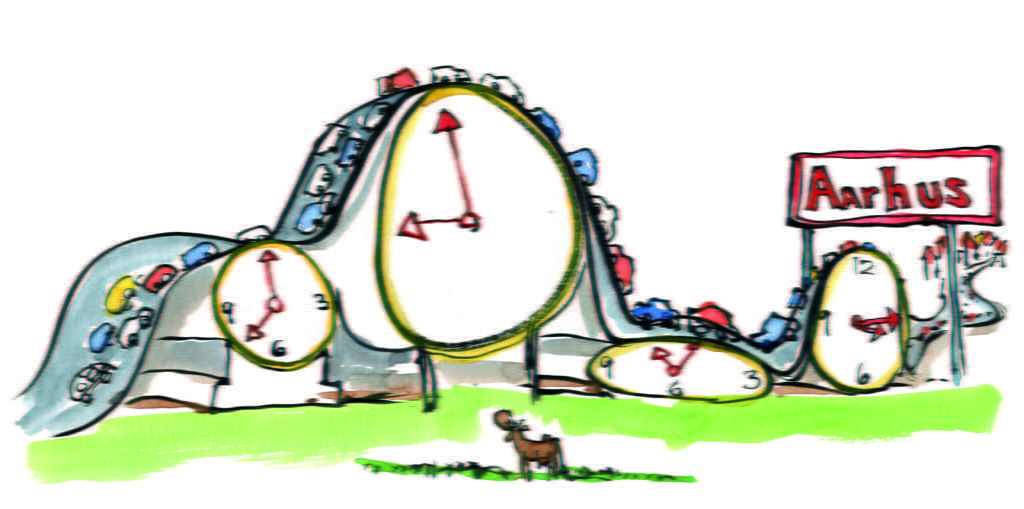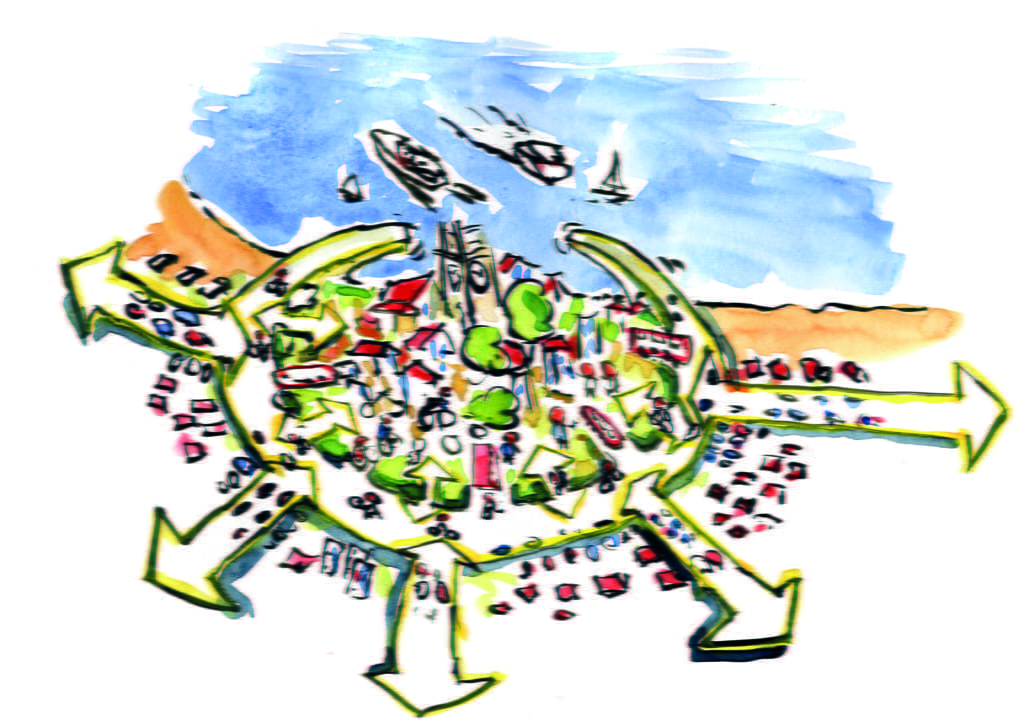Everybody talks about MaaS: but what does it mean in Aarhus?
Every day many underused cars are driving in our streets. Numbers from 2014 indicates that cars used for commuting carry just 1.05 persons on average. That’s a very inefficient use of vehicles. The MaaS system in Aarhus will be a strong combination of private carpooling and public transport services. This system should not only provide better mobility for the citizens in Aarhus and the surrounding municipalities, but will also contribute to reducing congestion.

Thinking Cities (TC): How does it differ from what we already see with, for example, Whim in Finland?
Gustav Friis (GF): The approach is different. Whereas Whim, along with public transport, is concerned about the inefficient use of the car over the day, the system in Aarhus is concerned about the inefficient use of the car when it is driving. Although both concepts are about sharing, we believe that there is a much larger potential for reducing congestion with car-pooling compared to car-sharing. TC: Why should people start using this MaaS system? GF: That is a very good question. Although the ‘sharing economy’ is on everyone’s lips it is hard to see a real breakthrough in mobility. Carsharing has a very difficult time in Denmark and car-pooling is mostly used on longer-distance leisure trips. When it comes to daily commuting it is very hard to see any incentives large enough to overcome the inconvenience of fitting car-pooling into a busy calendar. Aarhus has teamed up with The Federation of Danish Motorists (FDM) in a demonstration project where incentives will be tested.
TC: How can you be sure that the incentives are good enough?
GF: We will have to test it, and we will have to test different types of incentives depending on whether we are targeting the driver or the passenger, the young or the old. This is without doubt the most complex part of the project. Aarhus and FDM is working with the Department of Management at Aarhus University to identify the business model of the MaaS system. We want to investigate how the business model can be twisted to offer the most efficient incentives to the traveller while at the same time still have a valid business case for the private partners of the project and get the highest value for money for the public authorities.
TC: Does car-pooling work along the same lines as Uber?
GF: No. Often we use the term ridesharing to avoid people thinking of a fixed pool of cars in a system that can be ordered. However, Uber is often referred to as ridehailing service – so it can get confusing. When we are talking about car-pooling, we are talking about ordinary people on their daily commute picking up passengers that are going in the same direction. Car-pooling can either be for the entire trip or for the first or last mile. It requires, however, a critical mass of offered trips for the system to work. Therefore, the incentives for the drivers are very important.
TC: Why are you working with the Federation of Danish Motorists?
GF: It might seem odd to work with them on a matter such as car-pooling, but there is a very good reason for this. The Federation of Danish Motorists knows the car drivers very well and they know which incentives will be interesting for them. Since we are working primarily to support the car drivers to change their behaviour, we need to have knowledge about them. FDM is providing this knowledge.
TC: How can you avoid this idea being seen as just another app?
GF: Let’s be honest, it might be. However, the app as a technological solution is not the interesting issue here. The app is a framework for offering incentives for change. The MaaS solution will only be successful if we can come up with the right incentives for car users. The integration of both car-pooling and public transport is the first incentive for the user of the service and for the next year we will continue to develop incentives until we hopefully have the right mix.
TC: When will the app be ready to use?
GF: That is very hard to say. We will test it in closed environments in the beginning. We are testing both functionality of the service and the incentives and as we are getting more and more people on board the snowball will start rolling. When the snowball hits you, the service is ready for you to use.
